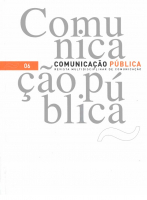America at play, america at war
the super bowl as discursive formation
DOI:
https://doi.org/10.4000/cp.7827Keywords:
Super Bowl, discourse, race, gender, warAbstract
This article analyses the last ten Super Bowls (1999-2008) and the image they present of America as a society characterised by fun, opportunity and enterprise, all carried out under the protection of the state and military. It addresses the troublesome place of both race and gender within this configuration, and pays particular attention to the changes which took place in the aftermath of the September 11 attacks responding to the motif of «America at war», changes which would themselves be affected by the gradual loss of social support for the war in Iraq.
Downloads
References
Brookes, R. (2002). Representing sport. London: Arnold.
Calhoun, W. D. (1987). Sport, culture and personality. Champaign: Human Kinetics.
Creedon, P. J. (1994). «Women, media and sport: Creating and reflecting gender values». In P.J. Creedon (ed.). Women, media and sport: Challenging gender values (pp. 3-27). Thousand Oaks, CA: Sage. DOI : 10.4135/9781483326764
Duncan, M. C. & M. A. Messner (1998) «The media image of sport and gender». In L. A. Wenner (ed.). Media sport (pp. 170-185). London: Routledge.
Dyer, R. (1997). White. London: Routledge. DOI : 10.1093/screen/29.4.44
Foucault, M. (2002). The archaeology of knowledge. London: Routledge. Translated by A. M. Sheridan Smith. French original published in 1969. DOI : 10.1177/053901847000900108
Gannon, M. J. and Associates (1994). Understanding global cultures. Thousand Oaks, CA: Sage.
Goldman, R. (1992). Reading ads socially. London: Routledge. DOI : 10.4324/9780203976944
Greimas, A. (1987). On meaning: Selected writings in semiotic theory. Minneapolis, MN: University of Minnesota Press.
Hargreaves, J. (1994). Sporting females: Critical issues in the history and sociology of women’s sports. London: Routledge.
Kanner, B. (2004). The Super Bowl and advertising: How the commercials won the game. Princeton, NJ: Bloomberg Press.
Kellner, D. (2003). Media spectacle. London: Routledge. DOI : 10.4324/9780203166383
McKinley, E. G. & T. Simonet (2003). Myth and Hegemony in post-Sept. 11 News Coverage. Paper presented at the ICA conference, San Diego.
Oriard, M. (1993). Reading football: How the popular press created an american spectacle. Chapel Hill, NC: University of North Carolina Press.
Real, M. R. (1982). «The Superbowl: Mythic spectacle». In H. Newcombe (ed.). Television: The critical view (pp. 206-236). Oxford: OUP.
Rojek, C. (2001). Celebrity. London: Reaktion Books. DOI : 10.1002/9781118989463.wbeccs036
Schwartz, D. (1998). Contesting the Super Bowl. New York, NY: Routledge. DOI : 10.4324/9780203699089
Wenner, L. A. (1998). «Playing the MediaSport Game». In L.A.Wenner (ed.). Media sport (pp. 3-13). London: Routledge.
Wray, J. H. (2001) Sense and non-sense: American culture & politics. Upper Saddle River, NJ: Prentice Hall.
Downloads
Published
Issue
Section
License
Copyright (c) 2008 Direitos de Autor (c) 2008

This work is licensed under a Creative Commons Attribution-NonCommercial 4.0 International License.
Os conteúdos da Comunicação Pública estão licenciados com uma licença Creative Commons - Atribuição-NãoComercial 4.0 Internacional.


